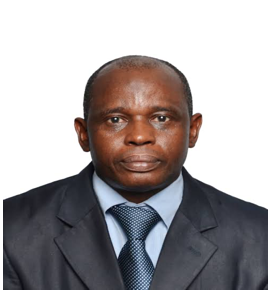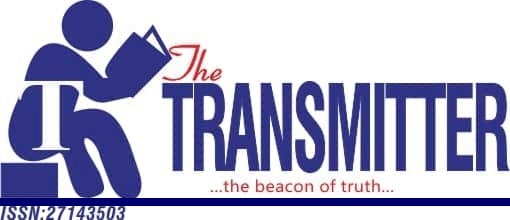
Development Levy Or Development Destroyer
By Prof. Kabiru Isa Dandago
Development Levy has been in the Nigerian tax laws for a very long time. As per the provisions in the present Personal Income Tax Act (PITA), it is a Levy designed to assist the states government in mobilizing funds for the execution of special projects that have a direct impact on communities. It is imposed mainly on working-class people earning an income within that community, and the amount payable by each worker is a maximum of one thousand naira (N1, 000).
In most cases, when a state decides to use the levy for any justifiable project, it is the employers that normally pay the amount for their employees. But in recent times, you hardly hear that any state government is collecting this Development Levy.
In the period before the Second Republic, development Levy was an unpopular form of tax imposed by the Native Authority (NA) on any adult member of a community, whether he was employed or not and whether or not the adult was into any trade, business, profession or vacation. The NA had many ways of making every adult pay the Levy and non-payment could attract embarrassing maltreatment/punishment by the NA, to the extent that some defaulters might even leave the community of their origin and run away to other communities, including running to other parts of Nigeria. In Northern Nigeria, this Development Levy is called Kharaj (in Arabic) or Haraji (in Hausa). Like Jangali (Cattle Tax), Kharaj used to be an instrument for humiliating or embarrassing the masses who could not pay.
On 1st October 1979, the newly elected governments of the People Redemption Party (PRP), under the tutelage of Malam Aminu Kano, surprisingly announced the abrogation/cancellation of the law that established the two forms of taxes (Jangali and Haraji) as part of the inaugural speeches of the PRP governors of the present day Jigawa, Kaduna, Kano, and Katsina states, to the delight of the masses who formed the bulk of the party’s supporters. The party, whose ideology was wholly pro-masses, was of the view that anything that negatively affects the well-being of the masses or puts the masses into any embarrassing situation should be dealt with, no matter its financial benefits/advantages. The Governors of the states won by the party, during the 1979 general elections, unanimously announced the cancellation/abrogation of the two forms of taxes in their inauguration speeches.
However, the Governors did not announce the cancellation of federally legislated taxes like the Personal Income Tax Act (PITA), Companies Income Tax Act (CITA), Capital Gains Tax Act (CGTA), Capital Transfer Tax Act (CTTA), etc. The Governors did not have the constitutional power to abrogate/cancel those taxes in their states, and that they had no any grudge against them as they have clear targeted income, profit or gains to be assessed before their imposition.
Unfortunately, the PRP’s abrogation/cancellation of Haraji (which, unfortunately, appears to be the only Hausa word in use for translating Taxation) had caused serious disdain against the term Taxation among the masses in those PRP-controlled states, in particular, and in the whole of the Northern Nigeria, in general. Again, not only in Northern Nigeria, most Nigerians all over the country are not happy with the way tax revenues are being managed in the country, suspecting that those in control of the public funds are greatly looting the amount realized from various taxes for their personal benefits as against utilizing the amount to provide high-quality public goods and services for both the rich and the poor to enjoy.
As the Nigerian masses are crying about high-level inflation due to fuel and other subsidies removal, devaluation of the Naira, and other causes of economic hardship, the issue of tax reforms with the plan to progressively increase Value Added Tax (VAT) rate and to take other tax reforms measures have attracted the active participation of many individuals and organizations in debating the controversial provisions of the Tax Reforms Bills (TRBs) that are presently before the National Assembly. The TRBs are four in number and their provisions are the subjects of discussion among various stakeholders in the Nigeria Project.
Here comes a brand-new Development Levy as the subject matter of Part 10, Chapter 2 of the Nigeria Tax Bill (NTB). That part of the chapter carries only one Section (Sec 59) with just 5 sub-sections, all contained in virtually a single page, which makes it look like an after-thought provision in the Bill! The Levy is designed to be imposed on the Assessment Profits of all companies chargeable to tax under chapters 2 and 3 of the NTB. The levy shall be at the rate of 4% of the chargeable companies’ Assessable Profit for 2025 and 2026 years of assessment; at the rate of 3% for 2027, 2028, and 2029 years of assessment; and at the rate of 2% for 2030 YoA and thereafter. The revenue accruing from the levy is to be distributed to some agencies of government that play key roles in ensuring advancement in science, engineering, and technology and overall educational development of the country, whose present sources of funds shall be stopped. As the levy is collected from the Nigeria Revenue Service (NRS), the amount is to be credited into a special account to be created for that purpose, and shared as follows:
(a) Tertiary Education Trust Fund (TETFund):
(i) 50% in 2025 and 2026 Years of Assessment
(ii) 66 2/3% in 2027, 2028, and 2029 Years of Assessment
(iii) 0% in the 2030 Year of Assessment and thereafter;
(b) Nigeria Education Loan Fund (NELFund)
(i) 25% in 2025 and 2026 YoA
(ii) 33 1/3 % 1n 2027, 2028, and 2029 Years of Assessment
(iii) 100% in 2030 YoA and thereafter
- c) National Information Technology Development Agency (NITDA)
(i) 20% in 2025 and 2026 Years of Assessment
(ii)0% in 2027 YoA and thereafter
(c) National Agency for Science and Engineering Infrastructure (NASENI)
(i) 5% in 2025 and 2026 Years of Assessment
(ii)0% in 2027 YoA and thereafter
It is clear from the above that by the end of 2026 YoA, NITDA and NASENI shall not be getting any share of the amount realized from the Levy, and that TETFund will also stop collecting anything from the amount realized through the Levy from 2030 YoA. It is not made clear in any part of the Bill, as to the source of funding for the three vital agencies when they stop collecting anything from the newly introduced Development Levy, while their traditional sources of funds are stopped or cancelled.
It is hereby suspected that the three infrastructure development agencies are intended for phasing out, since there is no indication of any alternative source of funding their activities. While NITDA and NASENI are being funded through some specific levies, TETFund is being funded through the provision of the Education Tax Act, which is a law legislated by the National Assembly. But all the three are to stop obtaining funds from their traditional sources of funds and they are to stop benefiting from the proposed Development Levy as indicated above. This suggests that, by the year 2030, all three infrastructure development agencies are likely to go, unless if government is to sustain them through its mainstream annual budgetary allocations.
Again, the funding of NELFund only with the amount to be generated from the Development Levy with effect from 2030 suggests that the concern of the drafters of the Bills is not about achieving sustainable development of the country but about meeting the conditionality of Nigeria’s major creditors (the World Bank and the IMF) for securing more foreign loans or for obtaining debt forgiveness.
Let’s appreciate how the sustainable national development efforts of Nigeria would be threatened if the three (3) agencies are gradually phased out or if they are to be weakly funded through the mainstream budgetary provisions:
NASENI: The mandate of NASENI is specifically in the area of Capital goods, research, production, and reverse engineering. NASENI, by its mandate and scope of operations, is Nigeria’s only purpose-built agency designed to conduct developmental work in the areas of manufacturing and as such, it is capable of coordinating the proliferation of technologies developed either within or outside of its Centres, including patents obtained. Technologies developed in the areas of spare parts, components, and systems engineering are to be transferred to Entrepreneurs for the production of goods and services. Nigeria can benefit from rapid technological development by strengthening NASENI. NASENI is discharging its duties using the amount generated through a levy of 0.25% on the turnover of all companies with an annual turnover of N4m and above. NASENI is simply mandated to turn Nigeria into a Science and Engineering economy.
NITDA: This is an agency of government that is given the mandate of converting Nigeria to an Information and Communication Technology (ICT) economy, and to make Nigeria compete favorably with established ICT economies of the world. NITDA exists on a levy of 1% of the Profit before tax of banks and other Financial Institutions (like insurance companies and Pension Funds Administrators/Custodians) and GSM firms with an annual turnover of N100m and above.
TETFund: This agency of government is established by virtue of the provisions of Education Tax Act, which mandates the agency to ensure high quality infrastructural development in tertiary educational institutions (TEIs) of a public nature, ensure high-quality capacity building of their staffs, and ensure sponsorship of high-quality research works from the staff of public universities, polytechnics, and Colleges of Education. The agency relies on the Education Tax at the rate of 3% of the Assessable Profit of all companies operating in Nigeria.
If these agencies are weakened or phased out gradually, the mandates given to them would be no more and the efforts started by them would be scuttled. This would pull the country backward in its mission to become an ICT economy and a Science and Engineering Economy, and all the developmental efforts being witnessed in the public tertiary educational institutions, through TETFund intervention, would be decreasing up to the year 2029, and from the year 2030, those efforts would be no more!
It is hereby suggested that the three agencies should be allowed to continue to exist using their sources of funds, while the government ensures that their structures are overhauled for them to become more effective and efficient as they enhance their performance for actualizing their mandates in good time. As they actualize their mandates, “real development” would be possible in the country, which is about a continuous decrease in poverty, inequality, unemployment, and dependency. As the four indicators of underdevelopment decrease from a high level, a lot of economic progress would be recorded in the country, which would make Nigeria a prosperous country. The government might wish to increase the percentage amount being collected from FIRS for funding NELFund, which is 1% of taxes, levies, and duties collected by the Service. This rate could be increased to 2%, and the FG should find ways of convincing the other tiers of government on the justification for doing that!
Alternatively, all the four agencies should be maintained and be funded with funds coming from the sharing formula contained in the NTB in respect of 4% of Assessable Profit for the first 2 years (2025 and 2026), that is: 50% for TETFund, 25% for NELFund, 20% for NITDA and 5% for NASENI. Each of the four agencies might further be assisted with additional funds from the mainstream Federal Government



